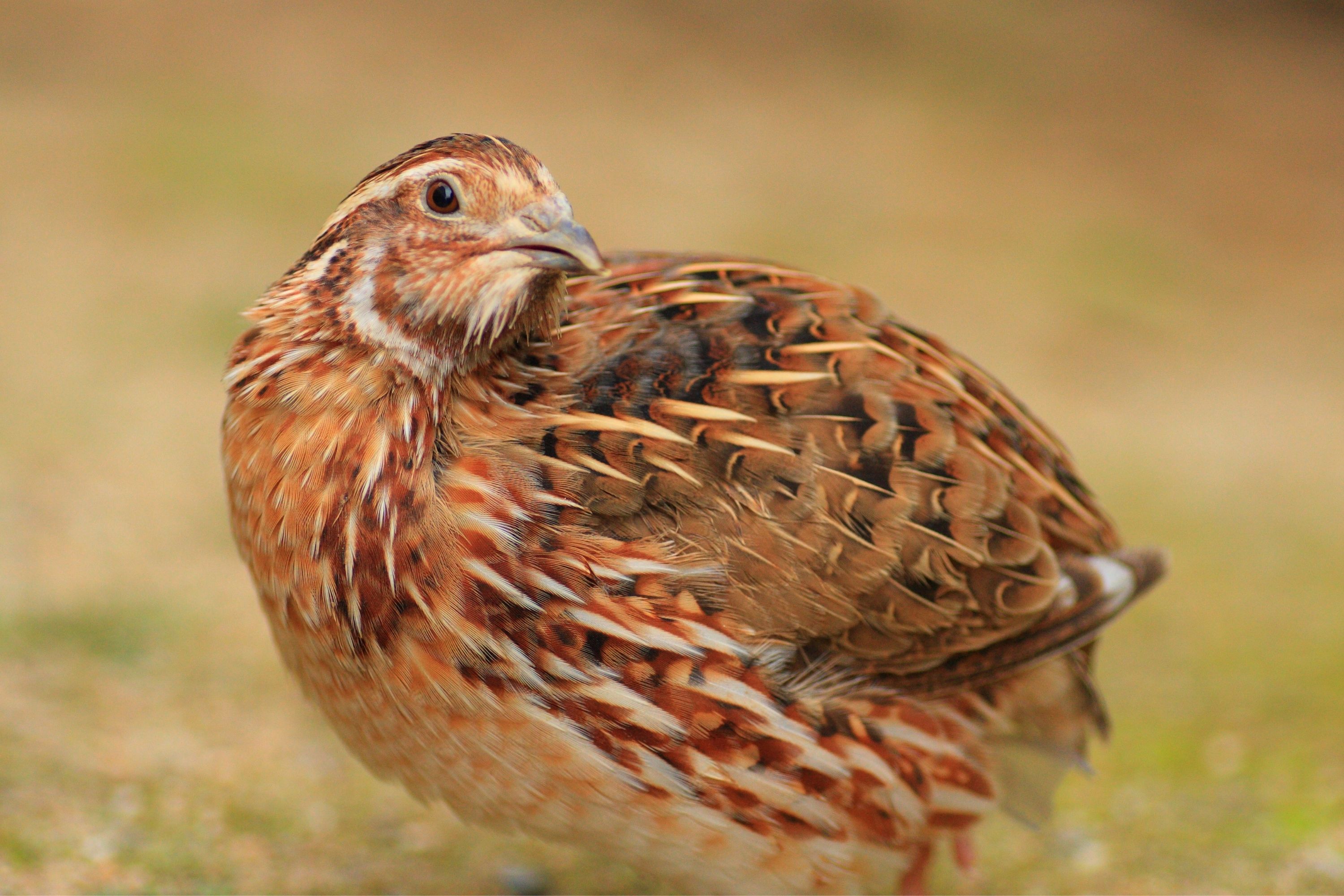Japanese quail
(Coturnix japonica)

Description
The Japanese quail (Coturnix japonica), also known as the coturnix quail, is a species of Old World quail found in East Asia. First considered a subspecies of the common quail, it is now considered as a separate species. The Japanese quail has played an active role in the lives of humanity since the 12th century, and continues to play major roles in industry and scientific research. Where it is found, the species is abundant across most of its range. Currently, there are a few true breeding mutations of the Japanese quail. The breeds from the United States are Texas A&M, English white, golden range, red range, Italian, Manchurian, Tibetan, rosetta, scarlett, roux dilute and golden tuxedo. The morphology of the Japanese quail differs depending on its stage in life. As chicks, both male and female individuals exhibit the same kind of plumage and coloring. Their heads are tawny in color, with small black patches littering the area above the beak. The wings and the back of the chick are a pale brown, the back also having four brown stripes running along its length. A pale yellow-brown stripe surrounded by smaller black stripes runs down the top of the head. The plumage of the Japanese quail is sexually dimorphic, allowing for differing sexes to be distinguished from one another. Both male and female adults exhibit predominantly brown plumage. However, markings on the throat and breast, as well as the particular shade of brown of the plumage, can vary quite a bit. The breast feathers of females are littered with dark spots among generally pale feathers. Contrastingly, male breast feathers show off a uniform dark reddish-brown color that is devoid of any dark spots. This reddish-brown coloration also appears in the male cheek, while female cheek feathers are more cream colored. Some males also exhibit the formation of a white collar, whereas this does not occur in any female members of the species. It is important to note that while this coloration is very typical of wild populations of Coturnix japonica, domestication and selective breeding of this species has resulted in numerous different strains exhibiting a variety of plumage colors and patterns. Most of the strains are sexually dimorphic, however, there are some that can not be distinguished on the basis of plumage colouration, these include Texas A&M, English white, tuxedo and others.
Taxonomic tree:







